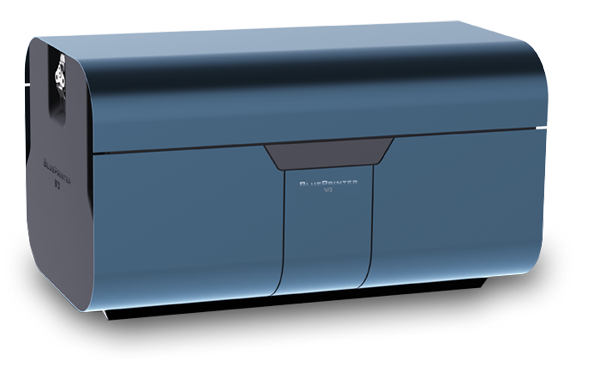The Powder Bed Fusion is another powder based 3D printing technique. Unlike the binder jet 3D printing that uses a binder liquid to glue together building material’s particles, in powder bed fusion techniques, the particles of building material for 3D part are fused together by the application of heat or electron beam. There are many types of powder bed fusion techniques namely – :
1. Selective laser sintering (SLS)
2. Direct metal laser sintering (DMLS)
3. Selective laser melting (SLM)
4. Selective heat sintering (SHS)
The Selective Laser Sintering is most commonly used Powder Bed Fusion (PBF) Technique. While the other PBF techniques are generally used for creating 3D models from thermoplastics, the direct metal laser sintering (DMLS) is the PBF technique dedicated and applicable to creating 3D models from metals and conductive materials only.
All the PBF techniques are similar in operation except that the method of fusing the powder material differs in them. In Selective Laser Sintering, a laser head is used to project high power laser beam on the powder material to melt the particles and fuse them together. The SLS method can be used make models from thermoplastics, glass, metal and ceramics. The DMLS technique also uses a high power laser head but the feed is always a powder of metal or a conductive material. The SLM technique is similar to SLS and is used for making structural 3D models for medical and aerospace applications. In Selective Heat Sintering (SLH) technique, a thermal print head contacts the metal powder to melt it and fuse metal particles together. The Electron Beam Melting (EBM) technique uses an electron beam projector to radiate high power electron beam onto metal powder and melt the metal particles for fusion. The EBM technique is usually carried out in a vacuum chamber except in case metals and alloys are used to create a functional 3D model.

The setup and mechanism of all the PBF techniques is quite same. In a machine for Powder Bed Fusion, there are two chambers where one chamber is filled with powdered building material to feed into the other chamber and the second chamber is used for making the 3D model. The 3D model is built by melting and fusing the particles of powdered building material using a Laser, thermal or electron beam print head. The plastic or metal powder is filled into the storage chamber and feed to the building chamber by rolling sufficient amount for each layer by a levelling roller or blade. The rolled out powder is filled over the building platform which has been lowered to the depth equal to required height of the layer in the beginning of the process. The height of layers is generally kept 0.1 mm or around. Later on either a beam of high power laser or contact thermal print head or high power electron beam is used to melt and fuse material particles while the head moves along the horizontal plane to create the path for the desired layer. After a single layer has been laid out, the platform is lowered to a depth equal to the height of next layer and powder is rolled out or slide out from the storage chamber to the building chamber. Again next layer is built by projecting a laser beam or electron beam or contacting a thermal print head along a computer controlled path. Similarly, all successive layers are built. After the completion of final layer, the 3D model is still is removed from the remaining powder material. The model is left in the machine for some time to cool down and get completely solidified for high quality finish of the 3D model.
The PBF techniques are comparatively less costly and also being a powder based method do not need use of support structures while making the models or parts. A large range of materials including ceramics, glass, plastics, metals and alloys can be used to make 3D objects using PBF techniques. However, the PBF methods have slow operational speeds and models created have size limitations. As the process involves melting of the building material, power consumption of PBF machines is quite high. The quality of the models created depends largely on the size of the powder grain and not all structural characteristics desired for a functional model can be achieved. That is why, the PBF technique is usually limited to prototyping applications.
The building material used in SHS is usually nylon. The SLS, SLM and DMLS techniques are commonly used to make models from steel, stainless steel, Aluminium, Titanium, Cobalt Chrome or other metal alloy. The EBM technique is also mostly used for models to be built from Aluminium, Stainless Steel, Steel, Titanium, Cobalt Chrome or other metal alloy.
For SHS 3D printing, Blue Printer is a popular machine. Some examples of SLS 3D printers are ProX SLS 500, sPro 140, sPro 230 and sPro 60 HD offered from 3D Systems. The 3D Systems also offers DMLS printers like ProX DMP 100, ProX DMP 100 Dental, ProX DMP 200, ProX DMP 200 Dental, ProX DMP 300 and ProX DMP 320. The Arcam S2, Arcam Q10 and Arcam A2 are popular EBM machines provided by Arcam.




Disclaim: ProX and Spro are registered trademarks of 3D Systems and EBM is a registered trademark of Arcam. The trademark names are used in an editorial fashion and to the benefit of the trademark owner, with no intention of infringement of the trademark.
In the next article of the series, another 3D printing process Direct Energy Deposition will be discussed.
You may also like:
Filed Under: Tutorials








Questions related to this article?
👉Ask and discuss on Electro-Tech-Online.com and EDAboard.com forums.
Tell Us What You Think!!
You must be logged in to post a comment.